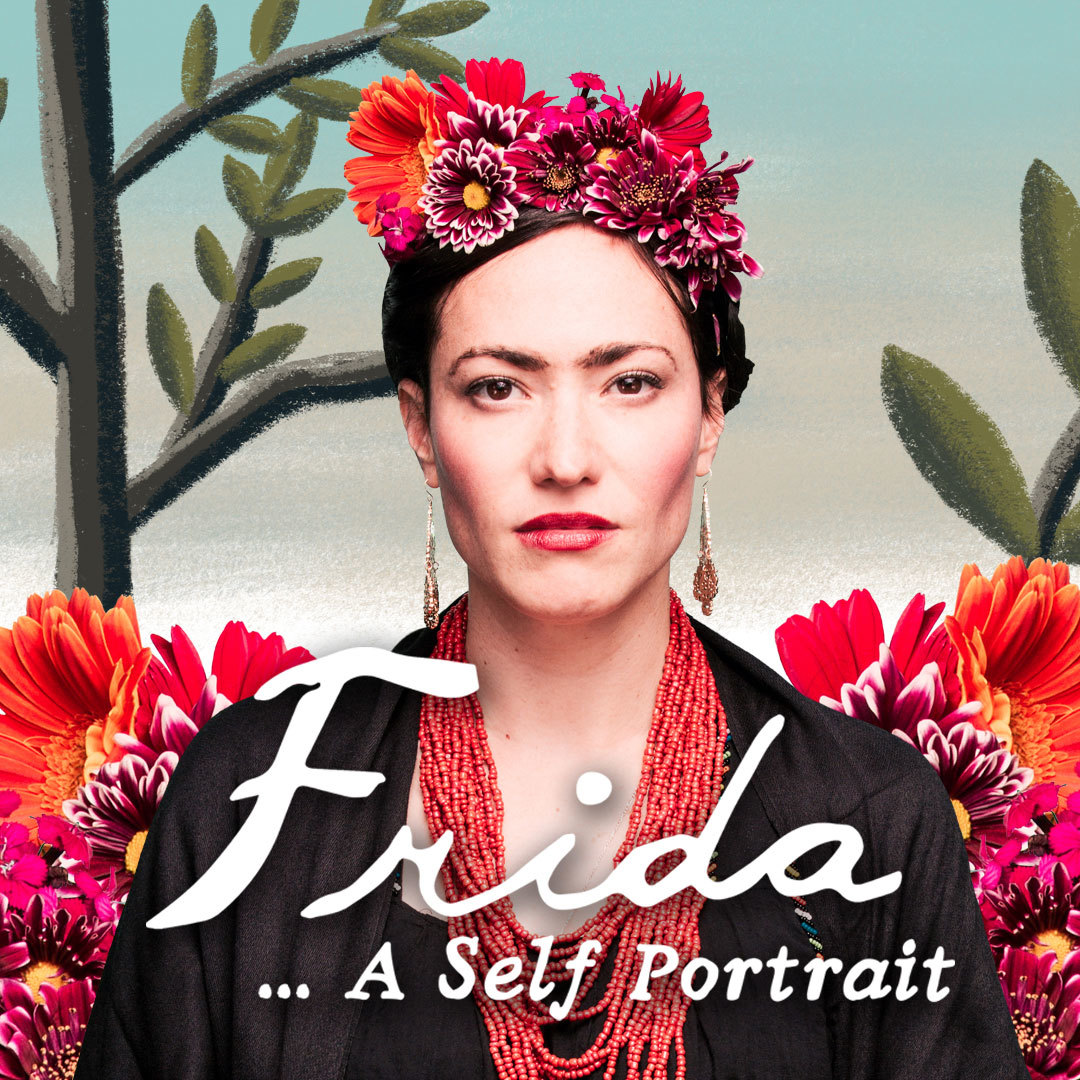Resource Guide
Frida ... A Self Portrait Plot Summary
Here is a brief summary of Frida ... A Self Portrait.
Learn MoreFrida Kahlo's Biography & Casa Azul
Vanessa Severo's performance introduces us to the history, events, and environment that influenced Frida Kahlo's work. To gain a deeper understanding of Frida's life, check out her biography here. Learn more about the play's setting, Casa Azul, and fully immerse yourself with a virtual tour!
Learn MoreBehind the Curtain: An Interview with Vanessa Severo
In this 2019 interview, the writer and performer of Frida ... A Self Portrait unveils how she came to blend Kahlo’s life with her own experiences.
Learn MoreFrida's Paintings
There are six Frida Kahlo paintings represented in Vanessa's performance, can you figure out which ones? Discover one hundred of Frida's works and try to spot the ones in the show!
Learn MoreOur Theater Community
When we gather together at the theater, the room belongs to all of us. We want every person who attends a performance — audiences, volunteers, staff, and artists — to be able to show up and feel fully seen and valued.
Learn MoreCast & Creative Team
Meet the cast and creative team for Frida … A Self Portrait.
Learn MoreStudent Matinee Curriculum
Portland Center Stage’s Student Matinee Program seeks to provide all young people with opportunities to experience and directly participate in the art of high-quality, professional theater in a context that supports their education. The following is designed to help students explore themes found in our production of Frida … A Self Portrait. We encourage you to choose the most appropriate activities for your group and adapt as needed.
PRE-SHOW DISCUSSION QUESTIONS
In your everyday life what outlet do you use to express yourself and your feelings (EX: art, sports, writing, fashion)?
What is the importance of learning about a person’s background and not just what they’re famous for?
What are the challenges of trying to tell someone’s story through theater? And what are the advantages?
POST-SHOW DISCUSSION QUESTIONS
When was the first time you saw yourself in another person, fictional or real? What experiences were they going through that were similar to yours? What was very different between the two of you?
What is a challenge in your life that you’ve had to overcome? What did you learn about yourself during that process?
If you could interview any historical person in history who would it be, and what would you want to learn about them?
What is something that you want to be remembered for once you’re gone? How are you working towards that?
ACTIVITY I: THROUGH THE MIRROR
Materials: Phone/mirror, notebook and pencil.
Step 1: Take a mirror or phone and study your reflection (1 min).
Step 2: Take your notebook and pencil and write about a favorite childhood memory (5 min).
Step 3: Study your reflection again (1 min).
Step 4: Putting your mirror/phone away, use your notebook to describe what you saw in your reflection and how you saw yourself. During this time make sure your writing is uninterrupted (3 min).
Step 5: Study your reflection for a final time (1 min).
Step 6: Now take your childhood memory story and rewrite it as if someone was observing you during that moment, a third person point of view.
Step 7: Compare your two stories.
Reflection Questions:
Did you discover anything new about your memory or yourself in the second story that wasn’t there in the first?
What was difficult about having to study yourself/reflection? Did it become easier with time?
Compare and contrast your two writing experiences (first person vs third person). Which point of view would you prefer to continue telling your story in?
ACTIVITY II: WELCOME HOME
Materials: Notebook, pencil, poster paper, glue, printed images/magazine cutouts.
Step 1: Create a list of words and phrases that describe you and your life.
Step 2: Take your list and write them out around the border edges of your poster paper. Creating a frame around the poster.
Step 3: Review your descriptors and picture yourself as a home. If you were a home, what would you look like? What would be inside you? Where would you be located? Be creative and feel free to keep away from realism.
Step 4: Picture yourself as a home and then create it.
Step 5: Take your poster paper and draw/create yourself as a home. Feel free to print images, use magazine cutouts, draw or paint.
Step 6: Share out what makes this home to you.
Reflection Questions:
What surprised you about the home you created?
If someone else was to create you as a home, how would their perspective differ from yours?
How might the image of yourself as a home look different in 5 years? How would it have looked 5 years ago?
Observe your actual home space. How are the lives of you and your family reflected in your home?
Thank you to our Education Program Sponsors!
Portland Center Stage is committed to identifying & interrupting instances of racism & all forms of oppression, through the principles of inclusion, diversity, equity, & accessibility (IDEA).














